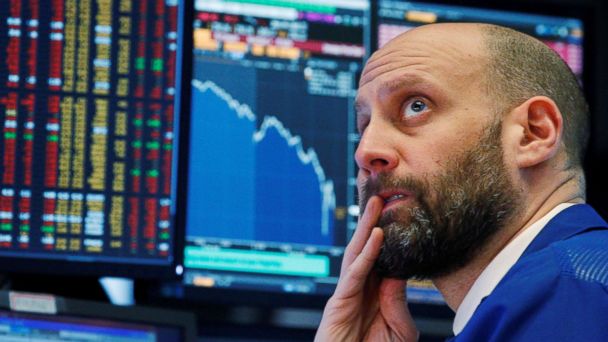After dropping for five sessions straight, the market is done with “panic selling.”
Now, the “panic buying” has begun.
Stocks are up big this morning after a wild bout of pre-market trading. The indexes looked ready to go lower in the early A.M. hours before flipping positive by the opening bell. Then, just an hour and a half later, equities soared.
The bottom’s been found, it seems. The coronavirus-induced dip has ended.
History shows that every 5-session sell-off of 10% or more (save for an October 2008 drop of 14.8%) has led to a net gain just two weeks after the plunge.
Last week, when the selling started on Monday, analysts were urging investors to buy.
Stocks were “on sale.” American business, they said, wouldn’t be this cheap again.
Instead, share prices plummeted across the board in the worst single Dow week since the financial crisis.
Long-term “buy and hold” investors got scorched. Some took the advice of Wall Street to double-down on their long positions.
But most ended up selling.
Many of the bulls-turned-bears did so at a bad time, right near the bottom set on Friday. If they sold stock bought during October 2019’s trade war-driven slump, they’ll pay capital gains tax on their once impressive, now paltry returns.
Others didn’t act at all, and simply held on for dear life.
By the end of the year, the hold-at-all-costs crowd will likely come out on top among long-term investors.
But the real winners, the ones who actually prospered during the fall, were the short-term traders. They didn’t just get out near the top of the indexes, either; some actually went short on market-correlated stocks after last Monday’s big drop.
The result? Huge gains on torpedoed companies, like Comcast (NASDAQ: CMCSA) and Walmart (NYSE: WMT), both of which dropped over 10% at their lowest points.
Even better was American Airlines (NASDAQ: AAL), which bears targeted prior to a 37% collapse.
What did these nimble market navigators all have in common? A subscription to Profits Run’s short-term trading advisory service, which handily beat the major hedge funds.
Wall Street kept buying last Monday and Tuesday while Profits Run traders were going short.
By Thursday, Wall Street finally capitulated, leading to the biggest Dow point drop ever.
And short-term traders raked in the dough.
Now that the market’s forming a bullish reversal, you can be sure that analysts will tell clients to buy back in. Stocks are still oversold, after all.
It’s time to go long.
But long-term investors will be doing so after getting heavily wounded the week prior. They’ll be re-entering the market right around where they got out.
Oh, and don’t forget, many of them will be forced to pay capital gains on their investments – something “buy and holders” don’t usually plan for. For short-term traders, capital gains are a known conclusion and mitigated by moderate risk, high reward trades.
Over the coming days, panic-selling, long-term holders will lament the fact that they just got “played” by a 5-session crunch. They’ll watch their portfolios return to their pre-dip levels as the market recovers.
But instead of celebrating, those folks will likely wonder just how much better they could’ve done had they taken a more active role in their investing.
It’s something that rarely crosses the mind of a successful short-term trader.
Especially after enjoying a series of trades that produced true “windfall” gains like CMCSA, WMT, and AAL all did.








